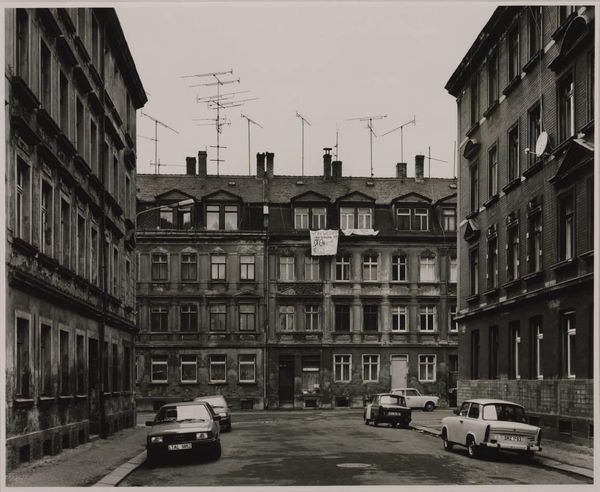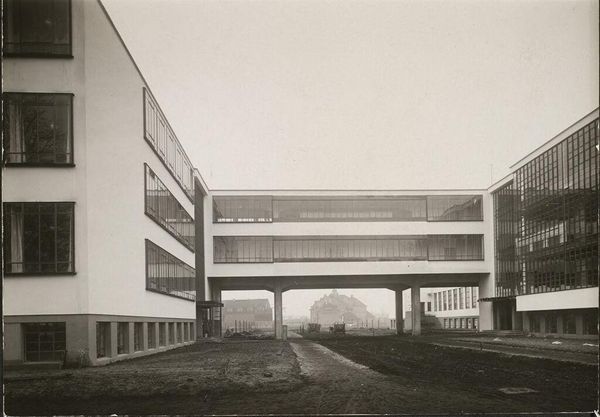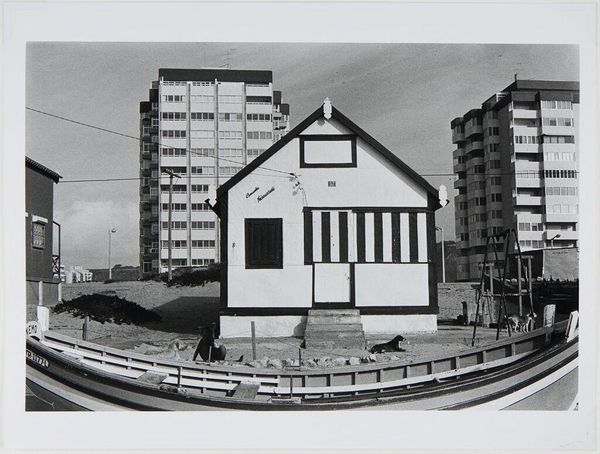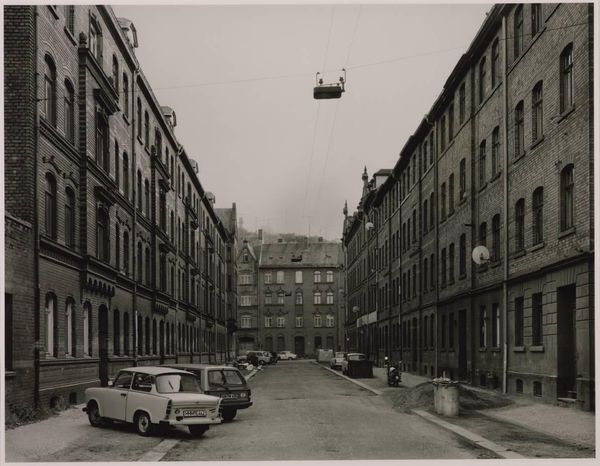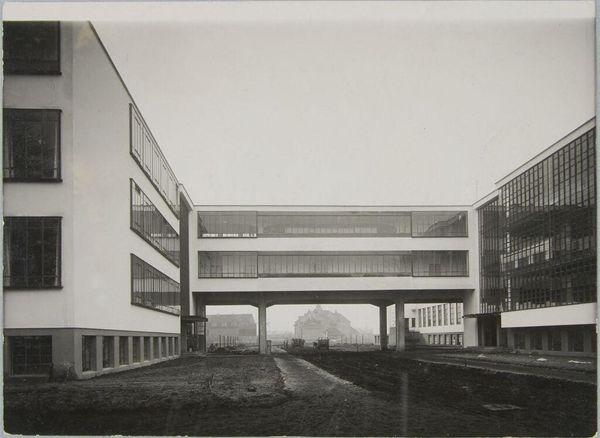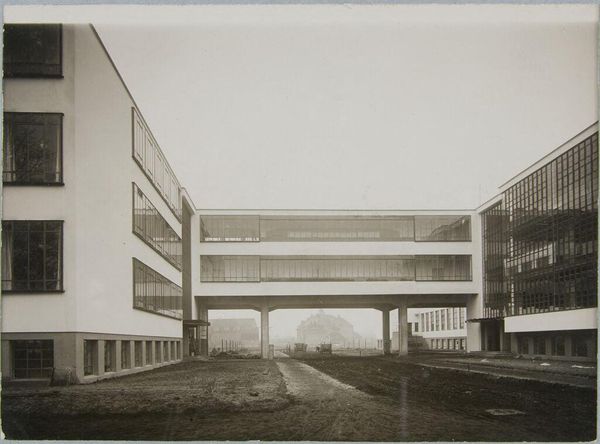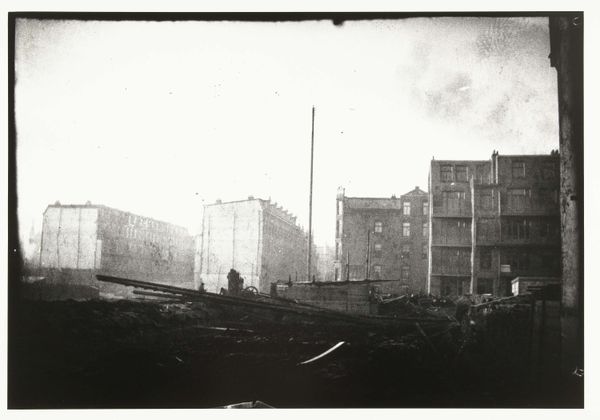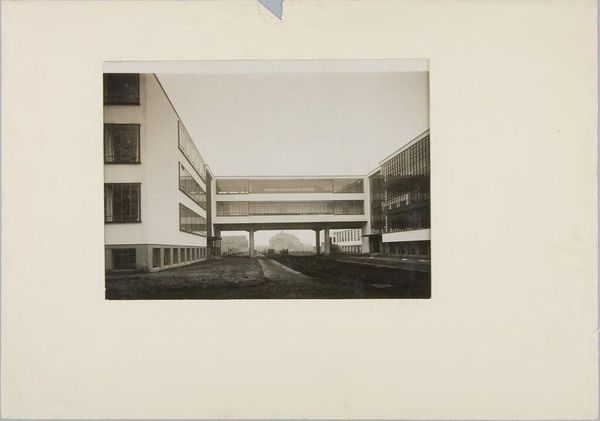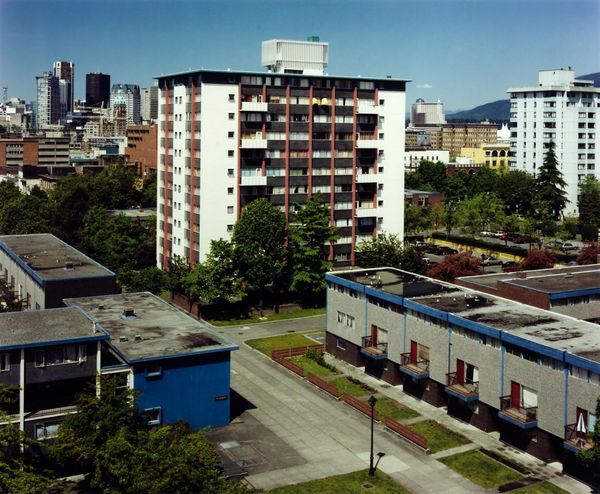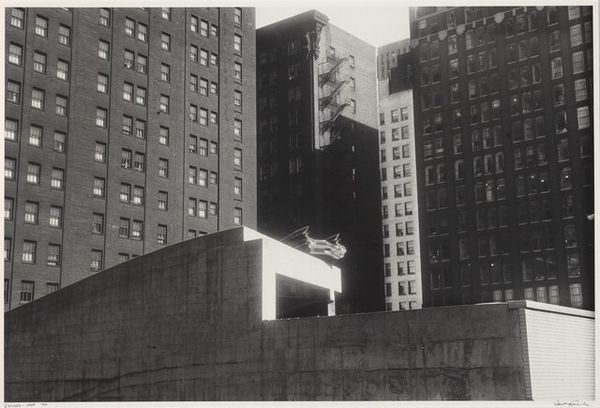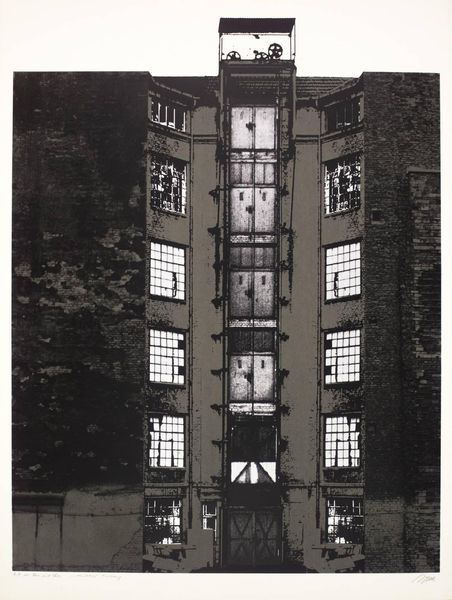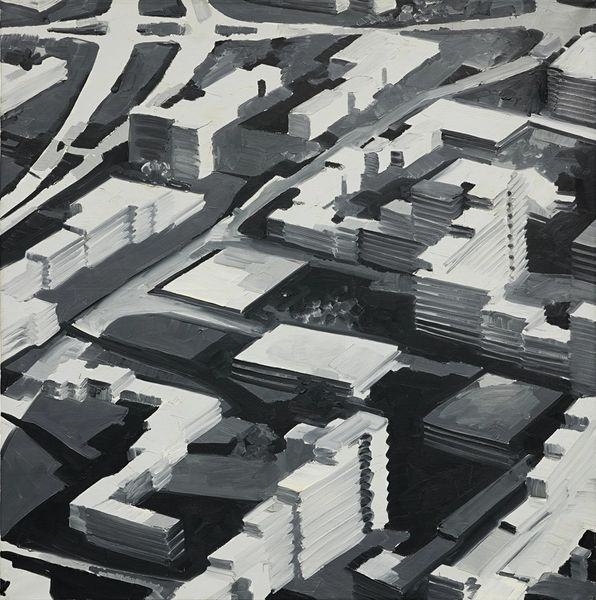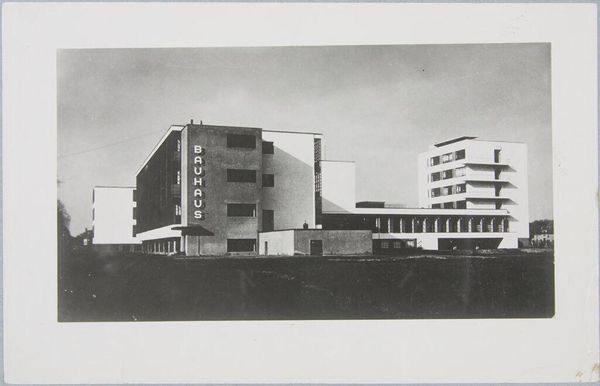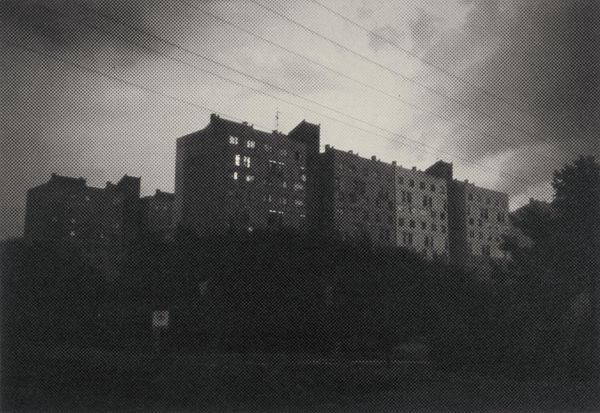
Dimensions: image: 461 x 569 mm
Copyright: © Thomas Struth | CC-BY-NC-ND 4.0 DEED, Photo: Tate
Curator: Thomas Struth captured this street scene, Ferdinand-von-Schill-Strasse, Dessau 1991, in his signature style. What are your first thoughts? Editor: A sense of oppressive order, almost dystopian. The repetitive architecture, the regimented cars...it feels devoid of joy. Curator: The image presents a stark portrayal of post-reunification Germany. The geometric patterns adorning the buildings echo a longing for order, a visual reassurance. Editor: Or perhaps a visual echo of past ideologies? The rigid uniformity speaks volumes about control, even if unintended. It makes me a little uneasy. Curator: Perhaps, but consider the camera's neutral gaze. Struth isn't overtly critical; he presents the scene, inviting viewers to interpret these symbols of urban planning. Editor: Still, the symbolism speaks. The rows of identical cars—a symbol of newfound consumerism, lined up like obedient soldiers. I find it hard to look away. Curator: It's a potent image, capturing a specific moment in time. A moment of transition, anxieties, and perhaps, a quiet kind of hope embedded within the ordinary. Editor: Yes, the quiet is the thing, isn't it? It's like the whole street is holding its breath. I think I will be thinking about this image for a while.
Comments
tate 8 months ago
⋮
http://www.tate.org.uk/art/artworks/struth-ferdinand-von-schill-strasse-dessau-1991-p20155
Join the conversation
Join millions of artists and users on Artera today and experience the ultimate creative platform.
tate 8 months ago
⋮
Thomas Struth began taking photographs of industrialised cities when he was studying under Bernd Becher (born 1931) at the Düsseldorf Academy in the late 1970s. He has continued to explore and develop the theme for almost twenty years, focusing his attention on such cities as New York, Tokyo, Berlin and Naples. Since the mid 1980s he has also produced landscapes, portraits and photographs of visitors in museums. Struth's images of the urban environment concentrate on seemingly unspectacular streets and public spaces. He seeks to record the face of urban space, seeing the architectural environment as a site where a community expresses its history and identity. In interviews he has stated that his images aim to explore what public spaces 'might say about the people who live in these sites.' (Quoted in Gisbourne p.5.) In recording the urban environment, Struth deliberately refers to the tradition of black and white documentary photography, adopting a seemingly objective position. The compositions are simple and the photographs are neither staged nor digitally manipulated in post-production. Struth has said: 'for me it is more interesting to try and find out something from the real than to throw something subjective in front of the audience.' (Quoted in Minelli p.190.) However, in spite of a link to the reportage tradition, Struth avoids both its snapshot approach and its quest for the capture of a fleeting, spontaneous image. Rather he carefully selects the sites where, using long exposures he makes sharply focused images. In 1991, two years after the unification of East and West Berlin, Struth began working on an extensive series of images that sought to record the face of the former East Germany, (of which Tate owns five). He travelled the country, taking photographs in a variety of cities which had previously been inaccessible from the West. In Ferdinand-von-Schill-Strasse, Dessau 1991 Struth employs techniques which have characterised the street scenes since the 1970s. He places the camera in the centre of the street at eye level, creating a vertiginous one-point perspective that leads the viewer's eye along the road and past the uniform 1960s apartment blocks as they curve out of view. Cars have been neatly parked in an orderly line on the left of the street and there is a single concrete block on the pavement to the right. Struth avoids all human activity and incident, the deserted street being like an empty stage-set. The central focus of the photograph is an empty space. This gives the image a melancholic atmosphere of absence, a mood which is enhanced by the neutral grey light of early morning that bathes the scene. The slightly shabby East German world that Struth depicts is one in which time is presented as having stood still. It is a world that is at once recognisable, but also alien because it had been hidden from Western eyes for forty years. It is an image of a world in which time has stood still. The uninflected image gives no hints as to how it is to be interpreted, and the viewer is led to linger over what might otherwise seem an un-noteworthy, everyday vista. As Struth has said, his work is intended to 'give pause', and thus resist immediate consumption. He seeks to bring about a 'move to investigative viewing' which is also a 'call to interact.' (Quoted in Buchloh p.31.) Further Reading: Mark Gisbourne, 'Struth', Art Monthly, no.176, May 1994, pp.3-9Giovanna Minelli, Another Objectivity, exhibition catalogue, Centre National des Arts Plastiques, Paris 1989, pp.189-194Benjamin Buchloh, Portraits: Thomas Struth, exhibition catalogue, Marian Goodman Gallery, New York 1990Thomas Struth: Strangers and Friends, exhibition catalogue, Institute of Contemporary Art, London 1994, reproduced p.67 Imogen Cornwall-JonesAugust 2001
